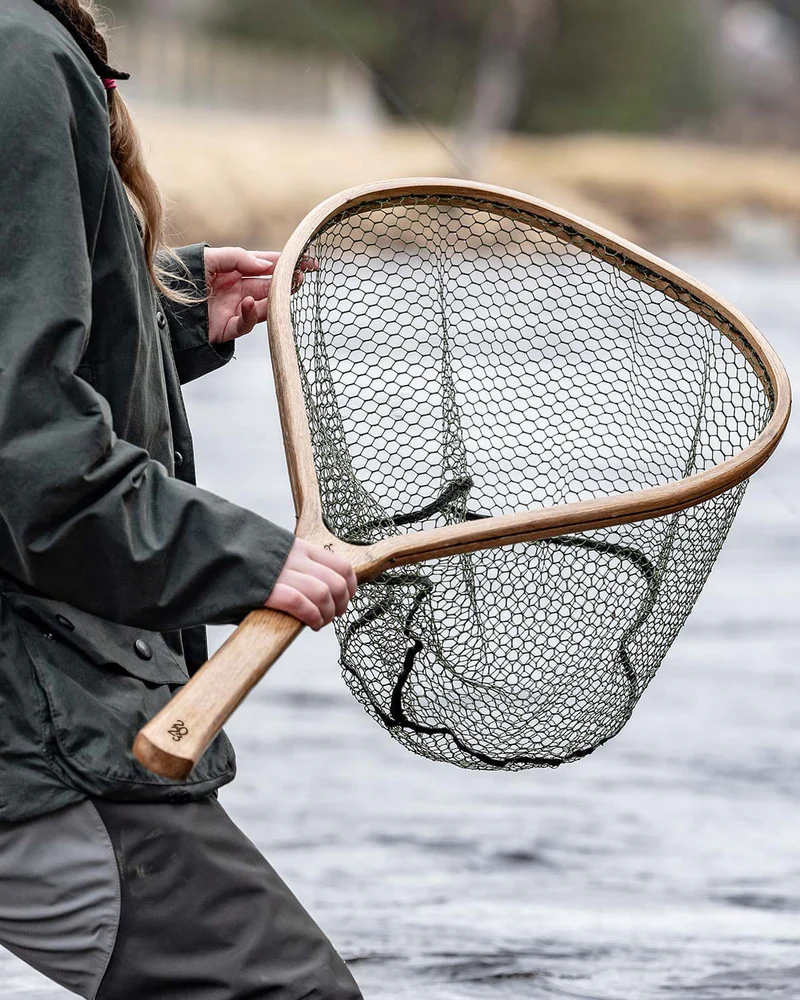
When it comes to successful catch-and-release fishing, your choice of gear can make all the difference. A Fly fishing net isn’t just a tool for landing fish—it’s a crucial piece of equipment that protects your catch, ensures your own efficiency on the water, and improves your overall angling experience. Choosing the right one requires an understanding of different materials, sizes, and features that can affect performance. This guide will walk you through everything you need to know to select the perfect net for your fishing adventures.
Why Choosing the Right Fly Fishing Net Matters
Many anglers underestimate the role a net plays in sustainable fishing. The right net helps minimize stress and injury to the fish, increases landing success, and keeps you organized during those adrenaline-filled moments when you finally bring your target in. Selecting a poorly designed or low-quality net could lead to lost fish, damaged gear, and compromised fish health.
Types of Fly Fishing Net Materials
One of the first decisions you’ll face is choosing the material for the net basket. Each option has unique advantages and considerations.
Rubber Nets
Rubber nets are highly recommended for catch-and-release fishing. The smooth, non-abrasive material reduces damage to the fish’s scales and protective slime layer. Rubber also prevents hooks from tangling, making it easier to release fish quickly. They are slightly heavier than some other options but provide superior fish safety.
Nylon or Mesh Nets
Traditional nylon or mesh nets are lightweight and affordable. They dry quickly and are easy to carry, but they can cause more damage to fish compared to rubber. Additionally, they are prone to hook tangling, which can slow down your release process. Some modern mesh designs use softer, knotless materials to mitigate these issues.
Coated Nets
Coated nets combine the advantages of both rubber and mesh. They have a soft coating over a mesh base, making them gentler on fish while remaining lightweight. They’re a versatile choice for anglers who want durability without adding too much weight.
Choosing the Right Net Size
The size of your fly fishing net should match the species you target and your fishing environment. A net that’s too small may not accommodate your catch, while an oversized one can be cumbersome to carry.
Small Nets
Small, lightweight nets are ideal for trout streams, creeks, and other locations where you’re targeting smaller species. They’re easy to maneuver in tight spots and won’t add bulk to your gear.
Medium Nets
Medium nets provide a balance between portability and capacity. They work well for larger trout, bass, and similar-sized species. They’re also a great all-around option if you fish in diverse waters.
Large Nets
Large nets are designed for big water and larger fish species like steelhead, salmon, or large bass. They offer deep baskets for safely cradling bigger catches, though they can be harder to carry during long treks.
Handle Length and Design
The handle plays a big role in how easy it is to land fish. Short handles are more portable and lighter, ideal for wading anglers who keep their net attached to their vest or pack. Longer handles offer extended reach, making them suitable for boat fishing or when targeting fish in wider rivers. Look for ergonomic grips that remain comfortable and secure even when wet.
Frame Materials and Durability
The frame of a fly fishing net should be strong yet lightweight.
Wooden Frames
Wooden frames are classic and visually appealing, often crafted from hardwoods like ash or walnut. They’re sturdy but can be heavier than other options.
Aluminum Frames
Aluminum frames are lightweight, strong, and resistant to corrosion. They’re ideal for anglers who fish in saltwater or need a durable option for rough environments.
Composite Frames
Composite frames, such as carbon fiber or fiberglass, provide a balance of strength and weight. They’re modern, sleek, and built for long-term performance.
Special Features to Consider
Today’s nets often include additional features to make fishing easier and more enjoyable.
Magnetic Net Releases
A magnetic release system allows you to quickly detach your net from your pack or vest when needed, and reattach it just as easily.
Tether Systems
Tethers prevent your net from drifting away if you drop it in the water. They’re a must-have for wading in fast-moving streams.
Collapsible Designs
Collapsible nets fold down for compact storage and are great for anglers who travel or hike to remote fishing spots.
Depth Markers
Some nets have depth markers inside the basket, allowing you to quickly measure fish without additional tools.
Matching Your Net to Fishing Conditions
The best fly fishing net for you will depend on where and how you fish. For small mountain streams, a short-handled wooden net with a rubber basket is perfect. For large rivers or boat fishing, you might prefer a long-handled aluminum net with a coated basket for versatility. If you frequently travel, a collapsible composite net can save space without sacrificing quality.
Caring for Your Fly Fishing Net
Proper maintenance ensures your net lasts for many seasons. Rinse your net with fresh water after each use, especially if you’ve been fishing in saltwater. Inspect the basket regularly for tears, and check the frame for cracks or signs of wear. Store your net in a cool, dry place to prevent warping or deterioration.
Common Mistakes to Avoid When Buying a Fly Fishing Net
Many anglers make the mistake of buying the cheapest option available, only to find it doesn’t meet their needs. Avoid nets with rough mesh, overly small baskets, or poorly constructed frames. Another common error is ignoring weight and portability—factors that become more important during long fishing days.
Final Thoughts
Your fly fishing net is more than just a landing tool—it’s a key part of responsible angling. The right combination of materials, size, and features can make your fishing more efficient, protect your catch, and enhance your overall experience on the water. By understanding the different options and matching them to your fishing style, you’ll be well-equipped to make an informed choice. At Fly Fishing Specialties, we believe in providing anglers with gear that supports both performance and conservation. Choose your net wisely, and you’ll enjoy smoother landings, healthier releases, and a more rewarding time on the water.



